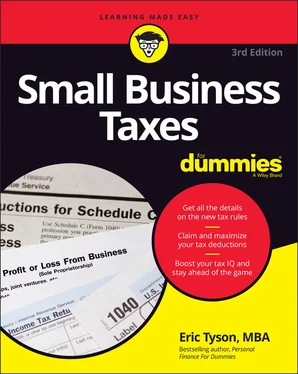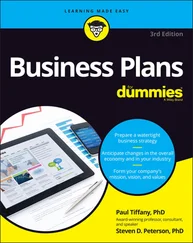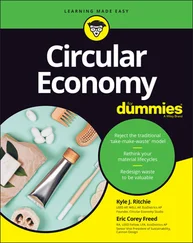Note that using a tax advisor is most beneficial when you face new tax questions or problems. If your tax situation remains complicated or if you know that you’d do a worse job on your own, by all means keep using a tax preparer. If your situation is unchanging or isn’t that complicated, consider hiring and paying someone to figure out your taxes one time. After that, go ahead and try completing your own tax returns.
Noting How Corporate and Individual Tax Reform Impacts Small Business
Corporate tax reform in the United States was long, long overdue. For too many years, corporations in the United States faced a much higher corporate income tax rate than did companies based in most overseas economies. As a result, increasing numbers of U.S. companies had chosen to expand more overseas rather than in the United States and to be headquartered outside of the United States, which wasn’t good for the long-term health of the U.S. economy and labor market.
Congress passed the Tax Cuts and Jobs Act in late 2017, which took effect with tax year 2018. It was the most significant tax reform package passed since the Tax Reform Act of 1986. What follows are the highlights of the most significant provisions that affect (and mostly benefit) small business.
Checking out corporate income tax rate reduction and simplification
At 35 percent, the United States had had one of the highest corporate income tax rates in the world before 2018. The Tax Cuts and Jobs Act slashed the corporate income tax rate to 21 percent, which represented a 40 percent reduction.
The corporate tax rules and deductions were simplified, including eliminating the corporate alternative minimum tax and closing some loopholes. The United States also moved to a territorial tax structure whereby U.S. companies would no longer pay a penalty to bring their overseas profits back home. The immediate impact of this change was to enable U.S. corporations to bring back to the United States more than $2 trillion being kept overseas to avoid excessive taxation.
The vast majority of small businesses aren’t operated as traditional so-called C-corps (more on those in a moment). Most small business owners operate as sole proprietorships (filing Schedule C), LLCs, partnerships, or S corporations. In those cases, the business owner’s profits from the business generally flow or pass through to the owner’s personal income tax return, and that income is taxed at personal income tax rates (see the section “ Noting 20 percent deduction for pass-through entities” for more information).
Reducing individual income tax rates
Just as the corporate income tax rate was reduced by the Tax Cuts and Jobs Act legislation, so too were the individual income tax rates. Most of the tax bracket rates were reduced by several percentage points (see Table 1-1). This, of course, is excellent news for the vast majority of U.S. small business owners who operate their businesses as pass-through entities (for example, sole proprietorships, LLCs, partnerships, S-corps).
TABLE 1-12022 Federal Income Tax Brackets and Rates
| Federal Income Tax Rate |
Single Taxpayers Taxable Income |
Married Filing Jointly Taxable Income |
| 10% |
$0 to $10,275 |
$0 to $20,550 |
| 12% |
$10,275 to $41,775 |
$20,550 to $83,550 |
| 22% |
$41,775 to $89,075 |
$83,550 to $178,150 |
| 24% |
$89,075 to $170,040 |
$178,150 to $340,100 |
| 32% |
$170,040 to $215,950 |
$340,100 to $431,900 |
| 35% |
$215,950 to $539,900 |
$431,900 to $647,850 |
| 37% |
More than $539,900 |
More than $600,000 |
Note that at higher levels of income, the individual income tax rates begin to exceed the 21 percent corporate tax rate. Seeing this helps you to better understand the next point as to why pass-through entities are being granted a special tax deduction on their profits.
Noting 20 percent deduction for pass-through entities
In redesigning the tax code, Congress rightfully realized that the many small businesses that operate as so-called pass-through entities would be subjected to higher federal income tax rates compared with the new 21 percent corporate income tax rate. Pass-through entities are small business entities such as sole proprietorships, LLCs, partnerships, and S corporations and are so named because the profits of the business pass through to the owners and their personal income tax returns.
To address the concern that individual business owners who operated their business as a pass-through entity could end up paying a higher tax rate than the 21 percent rate levied on C-corporations, Congress provided a 20 percent deduction for those businesses. So, for example, if your sole proprietorship netted you $65,000 in 2022 as a single taxpayer, that would push you into the 22 percent federal income tax bracket. But you get to deduct 20 percent of that $65,000 of income (or $13,000) for the pass-through deduction so you would only owe federal income tax on the remaining $52,000 ($65,000 – $13,000).
Another way to look at this is that the business would only pay taxes on 80 percent of its profits and would be in the 22 percent federal income tax bracket. This deduction effectively reduces the 22 percent tax bracket to 17.6 percent.
This is a major change that not surprisingly has made small business owners exceedingly optimistic about being able to grow their businesses. In fact, in a survey of small business owners conducted by the nonprofit National Federation of Independent Business just after the tax bill was passed and signed into law, a record percentage of those surveyed (covering the survey’s 45-year history) expressed optimism about it being a good time to expand their businesses.
This 20 percent pass-through deduction gets phased out for service business owners (such as lawyers, doctors, real estate agents, consultants, and so on) at single taxpayer incomes above $170,050 (up to $220,050) and for married couples filing jointly incomes that exceed $340,100 (up to $440,100). For other types of businesses above these income thresholds (for tax year 2022), this deduction may be limited so consult with your tax advisor.
Enjoying better equipment expensing rules
Through so-called section 179 rules, small businesses have historically been able to immediately deduct the cost of equipment, subject to annual limits, they purchase for use and place into service in their business. But the Tax Cut and Jobs Act bill expanded these rules.
Now, more businesses can immediately deduct up to one million dollars in such equipment expense annually (up to the limit of their annual business income). And, this deduction can also now be used for purchases on used equipment. These provisions, which don’t apply to real estate businesses, remain in effect through 2022 and then gradually phase out until 2027 when the prior depreciation schedules are supposed to kick back in.
Increasing maximum depreciation deduction for automobiles
The new tax bill included a major increase in the maximum amount of auto depreciation that can be claimed. The annual amounts of auto depreciation have more than tripled. Effective with tax year 2022, the maximum amounts that can be claimed are as follows:
Year 1: $10,000 up from the prior limit of $3,160
Year 2: $16,000 up from the prior limit of $5,100
Year 3: $9,600 up from the prior limit of $3,050
Year 4 and beyond: $5,760 up from the prior limit of $1,875, until costs are fully recovered
Читать дальше












